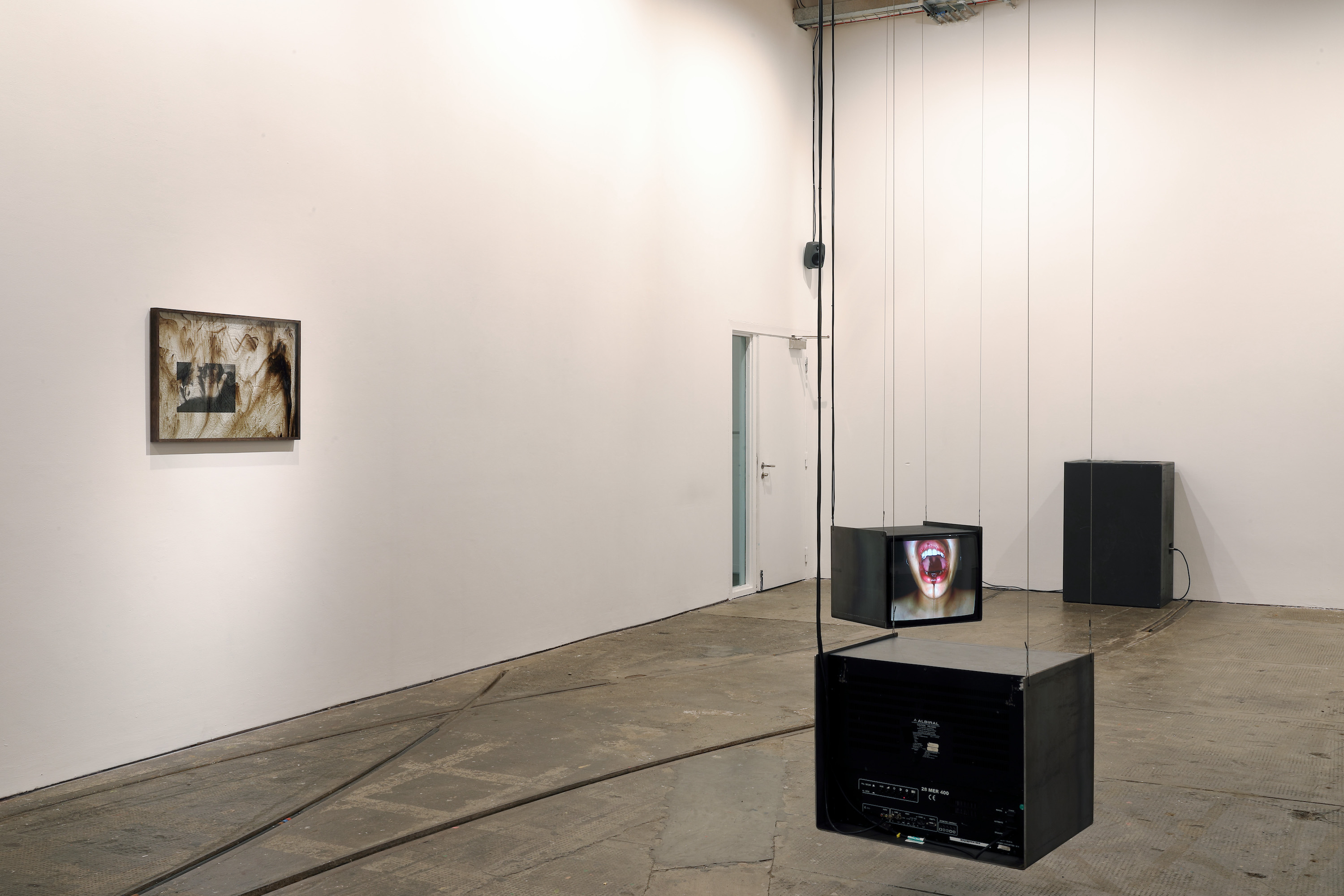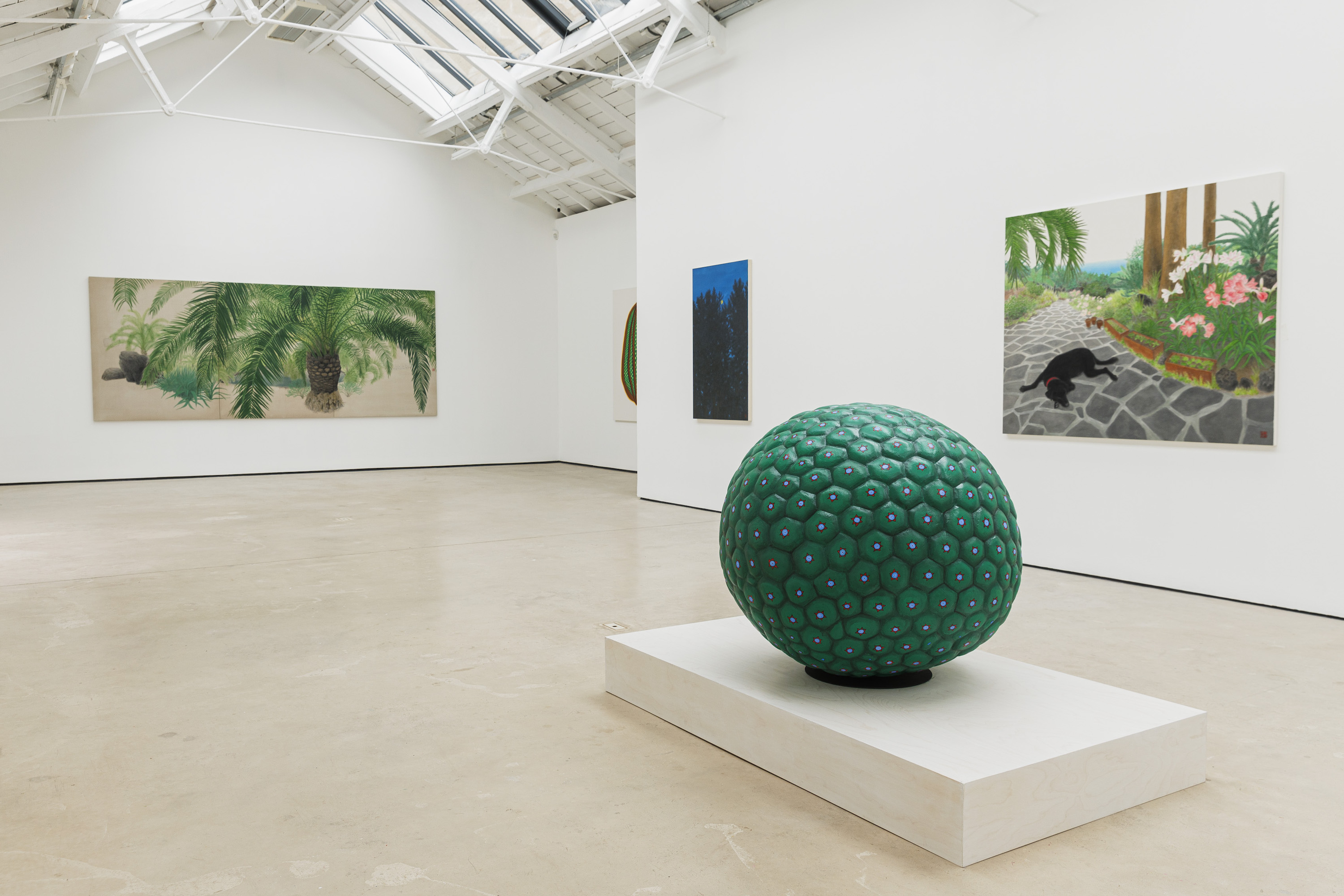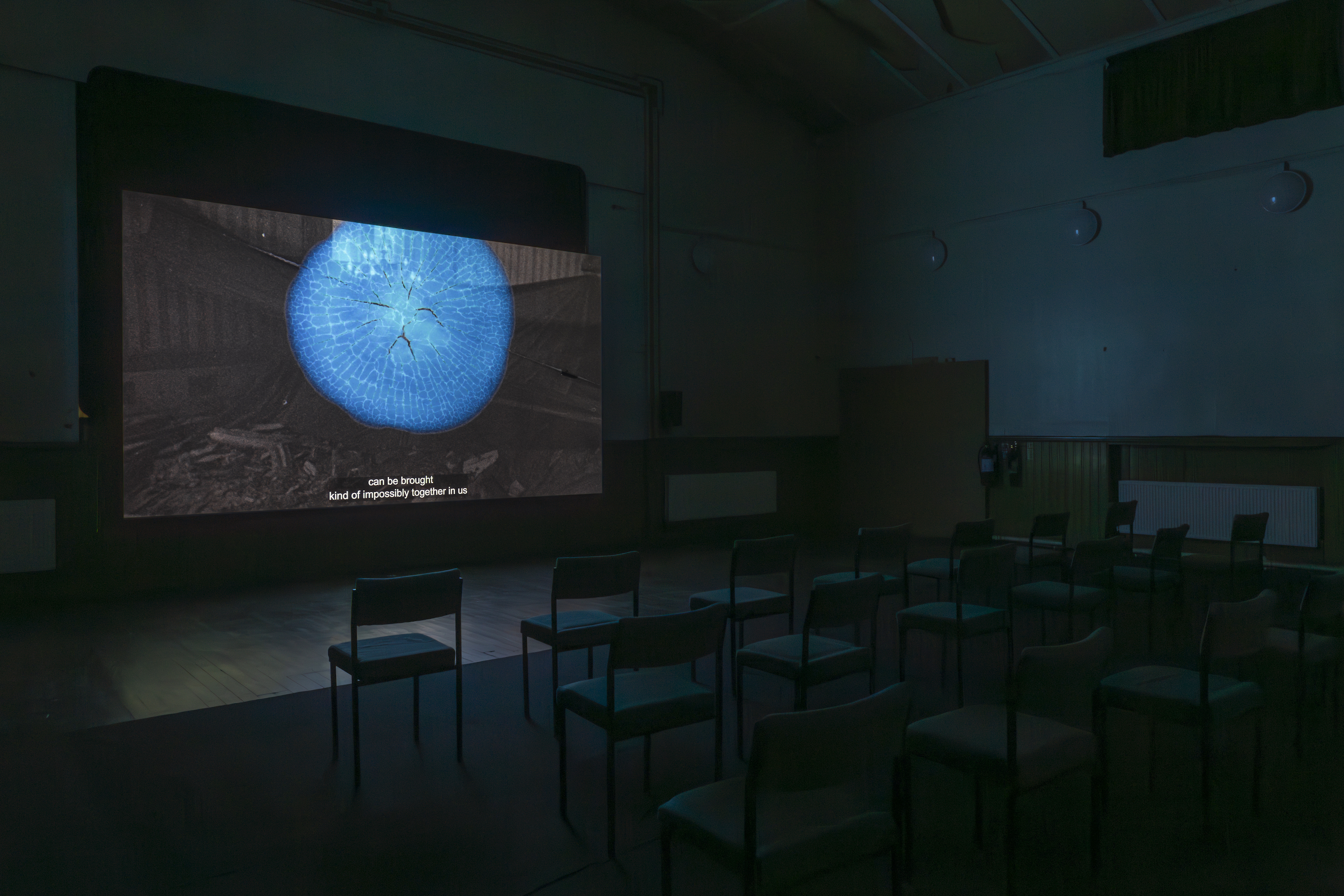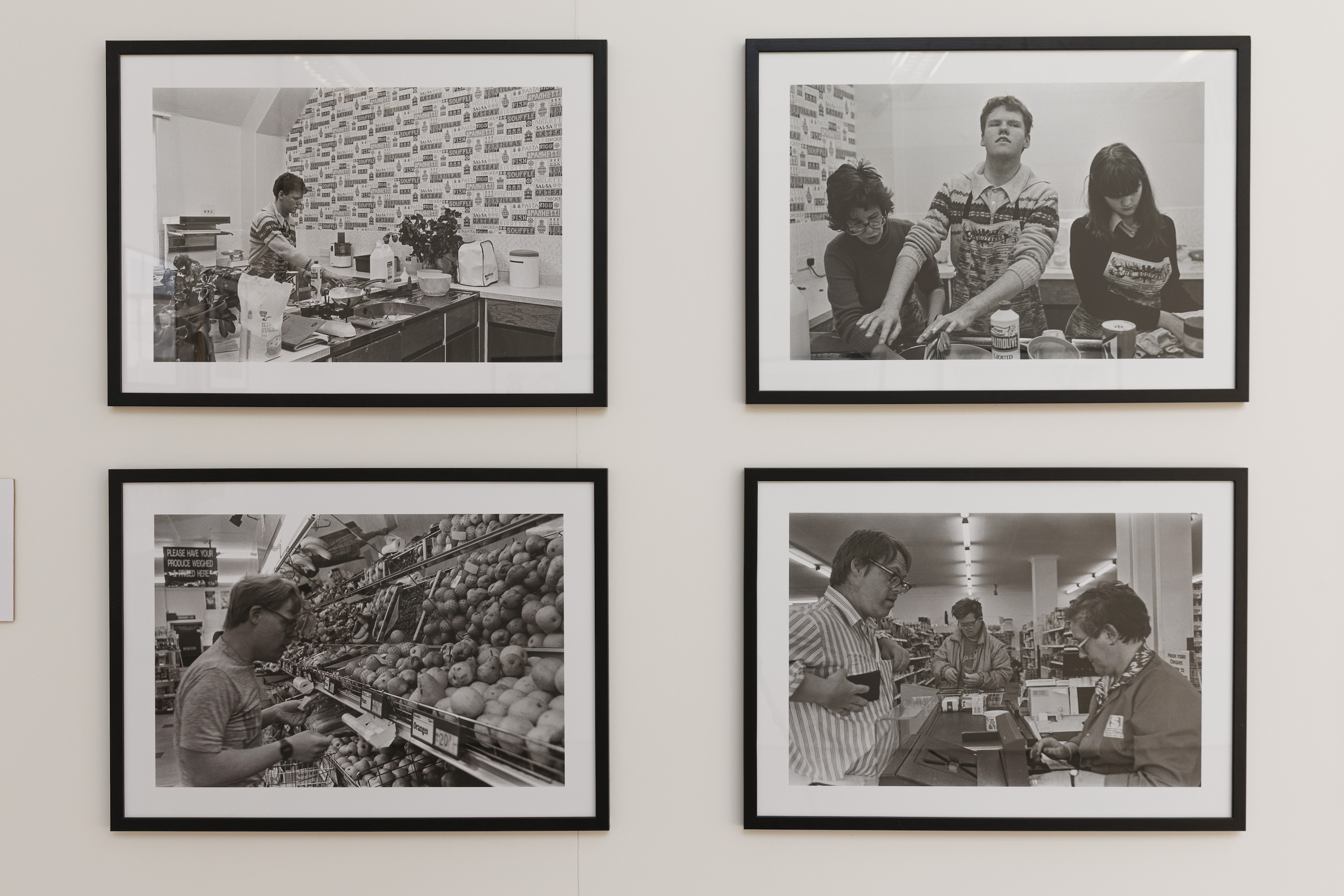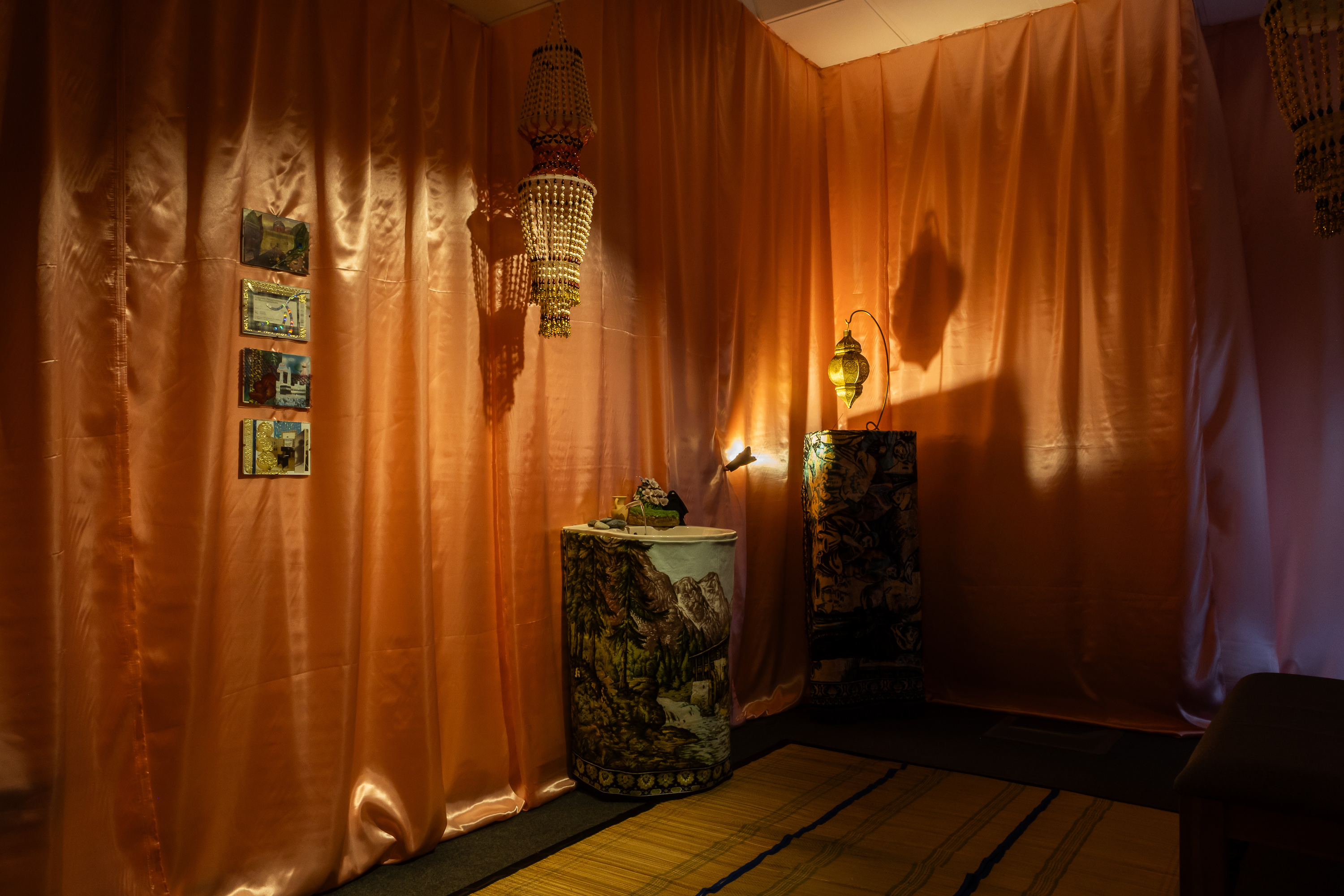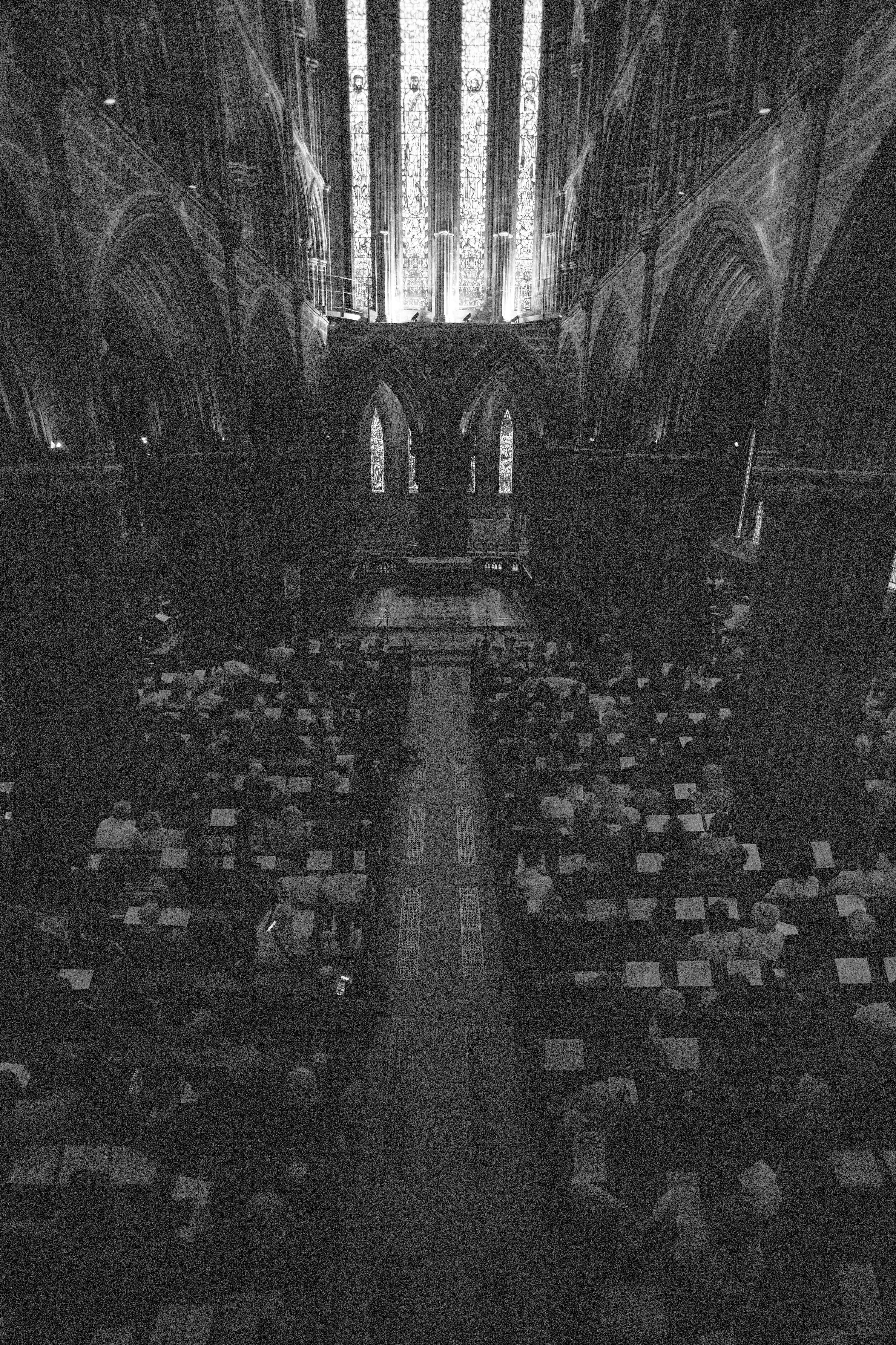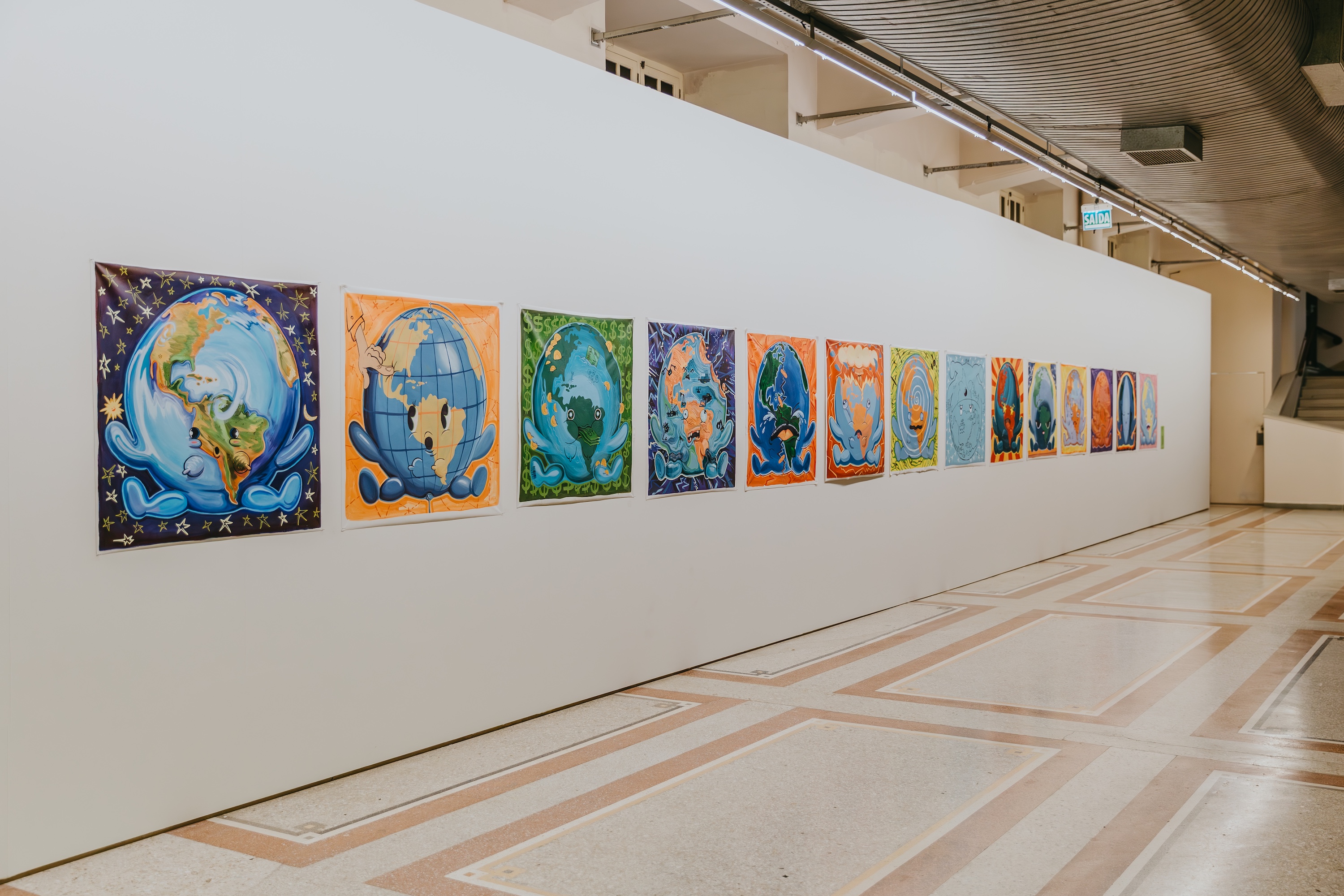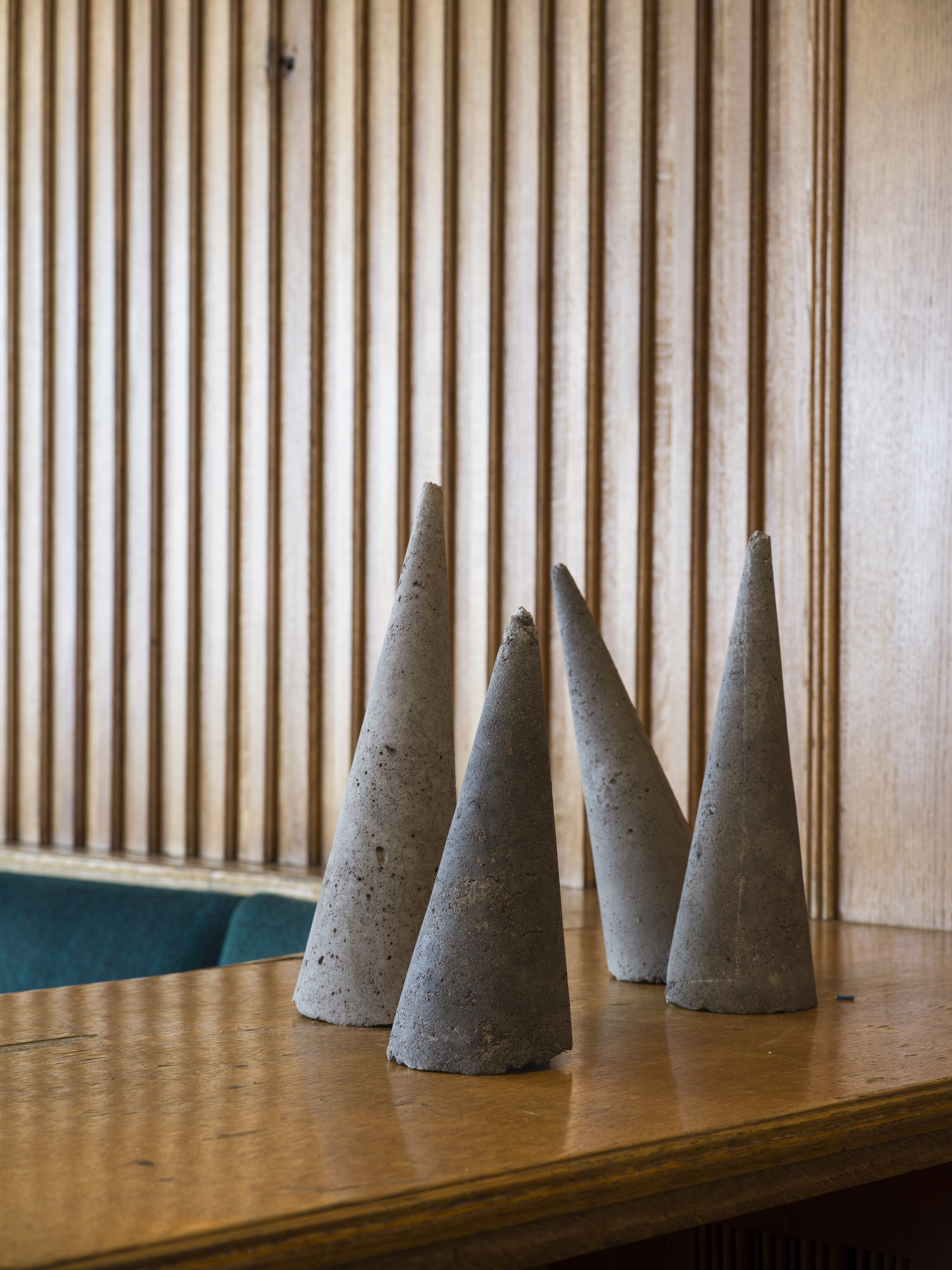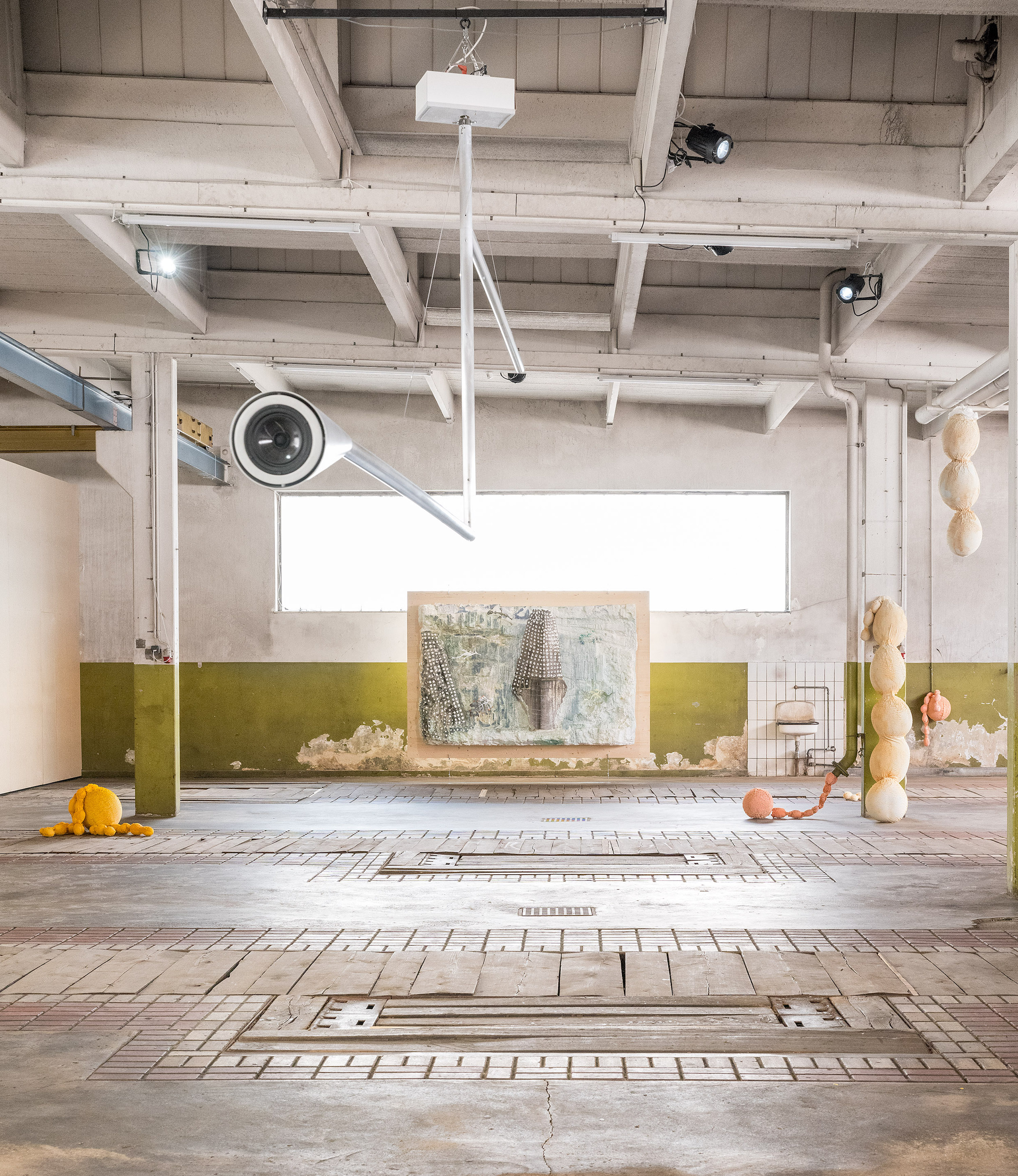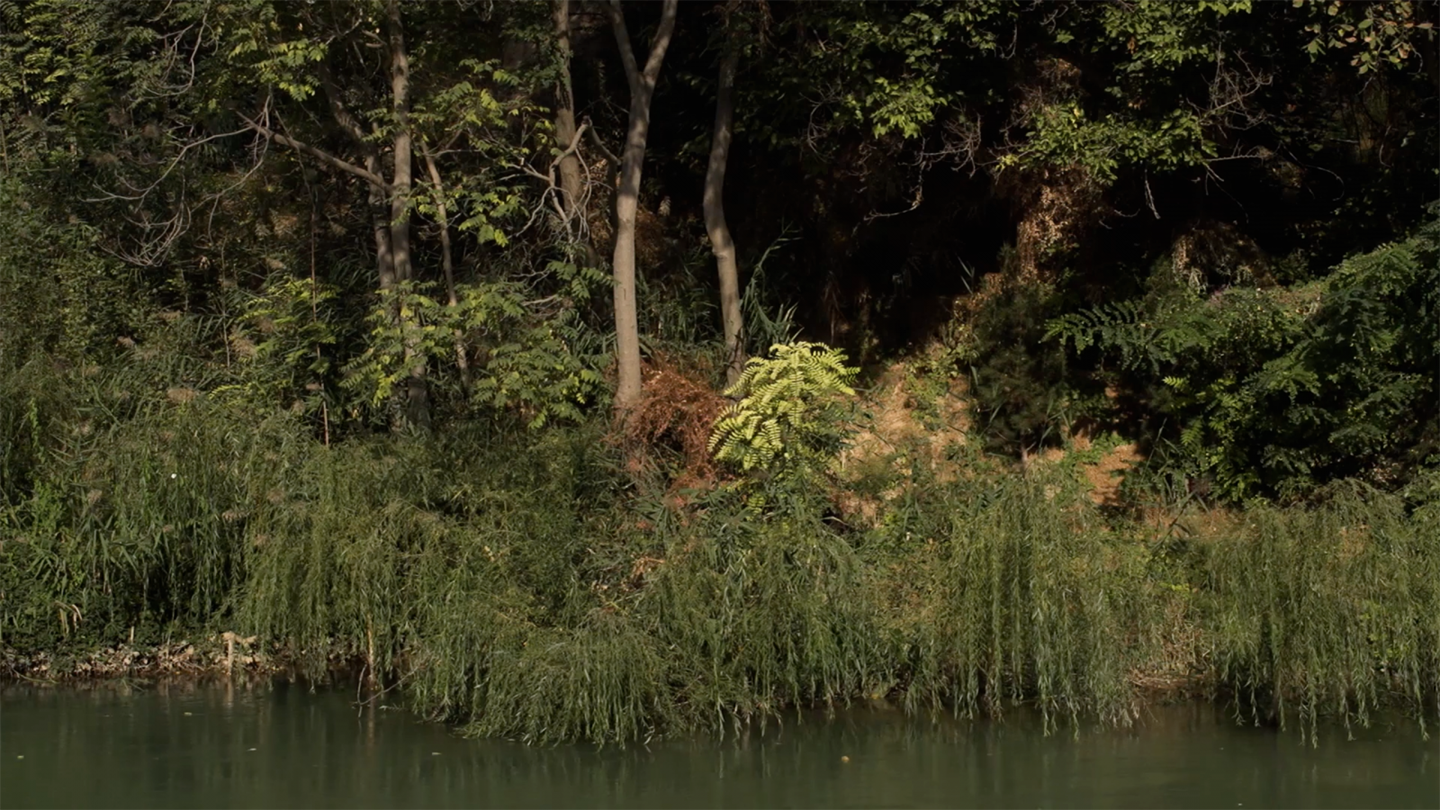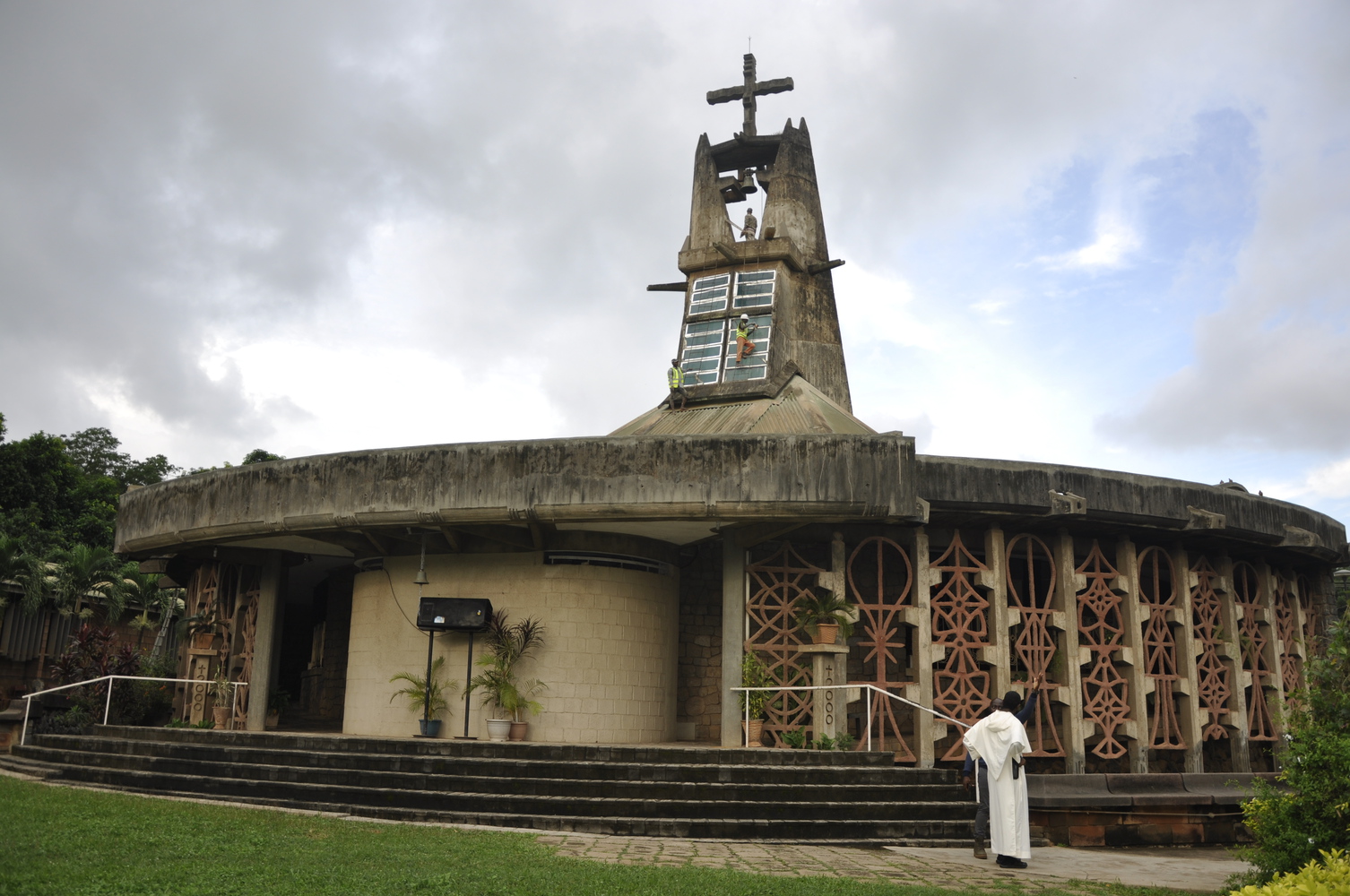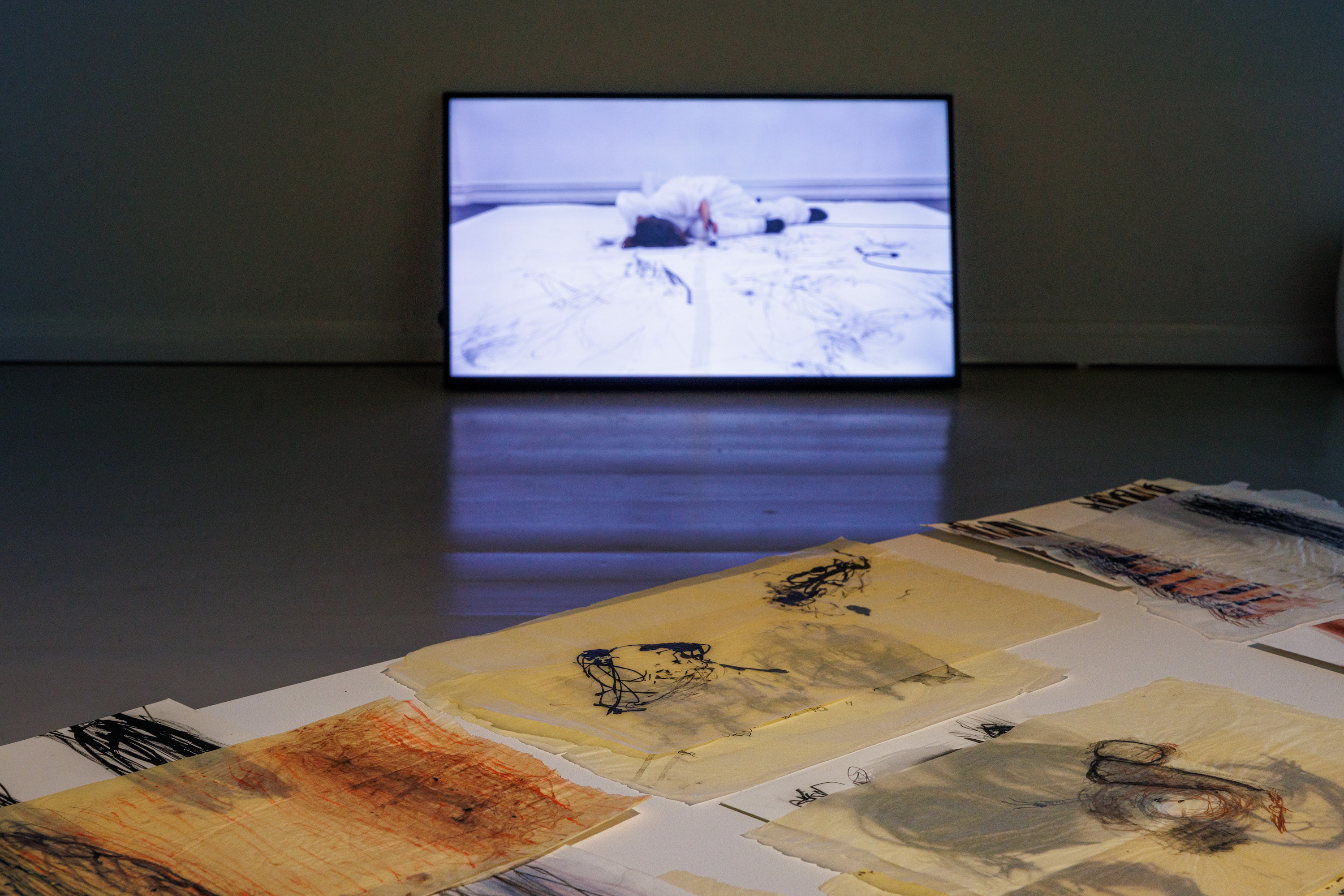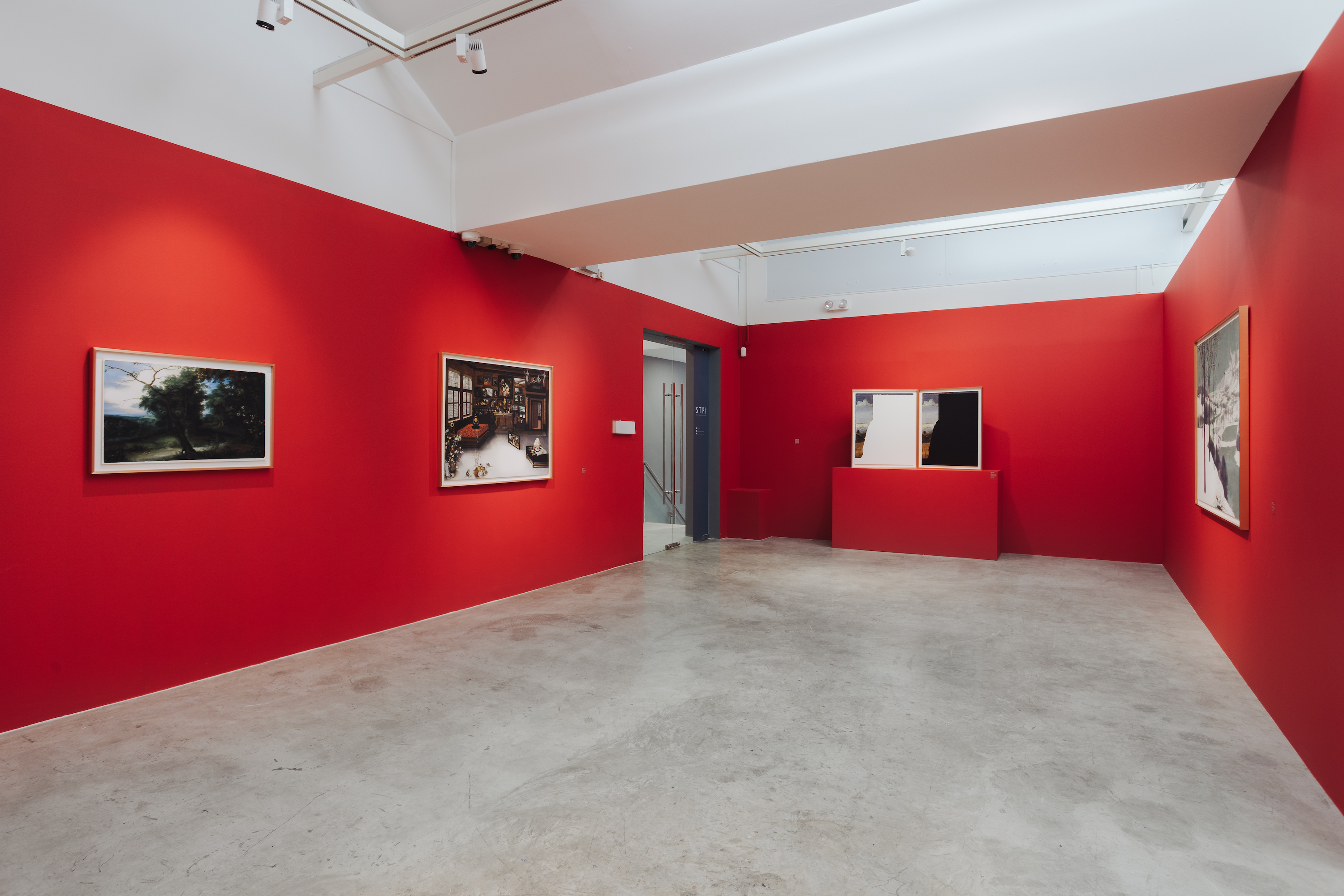June 7–23, 2024
At the end of the first day of Glasgow International I sat on a straw bale at Tramway to watch Delaine Le Bas dancing on a white boxing ring that had been surfaced with eggshells. The performance, and the maximal neon and sequin installation of inked and embroidered sheets and bottled urine that environed it, made an emphatic point about life as a traveller now: “WE’RE NOT WALKING ON EGGSHELLS ANY MORE,” Le Bas shouted.
I was thinking about the hens. I wondered how long it had taken them to lay so many, many eggs, and whether each shell was from a different chicken, or some of them contributed multiple eggs as a durational project. Were the eggs free-range, or repurposed byproducts of the omelette industry? Around me the performers stamped and shouted; the audience watched, whispered, and sipped white wine. Meanwhile, elsewhere, the hens were roosting, having contributed time and body so that we could do… this.
I’m not taking any moral high ground here (I eat eggs for breakfast) but the warm, feathery, apparently collateral bodies intruded on my experience of the performance and I was unable to watch it on its own terms. I suspect this is something other people have felt or thought, in form if not in the particulars—this quality of being alert to connections and origins of whatever we are looking at is an embedded way of seeing for artists and audiences of this generation. It was apparent at this year’s Glasgow International, where many new works involved a kind of excavation, subjecting history and environment to a deep and atomized attention, beginning at the chained blue gates to Ramshorn Cemetery. By padlocking the entrance to the old graveyard, now a quiet green space in the city centre, Cameron Rowland steers the audience to consider what lies inside it. Eighteenth-century burial plots here were purchased by local merchants with profits from plantations and enslavement. The chain and padlock literalize questions of freedom, access, and closure.
Material links between Glasgow and the plantations were also visible in Camara Taylor’s “[mouthfeel]” at Tramway, where products of historical colonialism are linked into contemporary racism and capital flows. A rusted metal fountain runs with dark rum (the smell was overpowering); televisions play videos of chocolate coins melting in a dribbling mouth; warped glass obscures almost abstract portraits; incantatory music (created in collaboration with 皚桐 [Ai Túng]) washes around the space. The show pours into the body through sight, sound, smell, but it doesn’t become immersive because nothing is permitted to bind. A metal lectern is too tall, the video screens down at knee height; a typed document redacted; the soundtrack and the fountain whisper across one another. The exhibition enumerates the ways in which Black pasts have been whited out in Scotland’s history, each element made unreachable by Taylor’s exquisite technical interventions: smoking, blurring, burning, obstructing or obscuring. The show is intoxicating and sobering at the same time, haunted by extreme violence and the scent of daiquiris.
“[mouthfeel]” affected the way I saw the documentary materials in other works around the city. There was an emphasis on the fugitive, glitches, and redactions, and a heightened attention to omissions from the record. Mina Heydari-Waite’s fragmented, shaky video, shot on camcorder in the 1990s by the artist’s father. Wei Zhang’s grainy archive footage of shipyard protests, spliced with 3D animations. Sandra George’s rangy and alive street photographs and personal notebooks. Cathy Wilkes’s slip of old tracing paper, curling at the edges.
Wilkes’s exhibition at The Hunterian, described in the exhibition text as a “response to war and conflict,” draws this heightened attention to a pitch. The dimly lit space feels hallowed and also categorically domestic. The vitrines are battered kitchen tables. Worn garments are placed on the walls and floor. Barely painted canvases are hung on jutting white screens. A candlewick bedspread is tucked over a frame. I thought of Alice Munro’s description of small-town lives: “dull, simple, amazing, and unfathomable – deep caves paved with kitchen linoleum.”1 Each placed object here comes soaked in its enigmatic history, quietly and firmly instructing you to enquire precisely why it is just so. The show is tightly orchestrated toward a final scene of violent impact.
This year’s Glasgow International didn’t have a title concept, a decision that seems sensible and suggests confidence, the curators feeling no need to shore up the works with one big point. It also allows subtler themes and differences to suggest themselves. At the Modern Institute, Kim Bohie’s paintings of twilights and sea views could hardly be less like Wilkes’ work—Bohie’s paintings take being pleasant to an extreme—but they share a quality of sincerity and a sense of compulsion toward the subject. Bohie’s rich paintings (of leafy branches, black dogs, amaryllises, volcanic rocks, and low yellow moons) would be at home in an art collector’s vault, but I could equally see them in reproduction in a hospice or a waiting room, places where an artwork has a different kind of value, one that is more immediate. Bohie references the sansuhwa Korean landscape tradition, drawing on ideas of naturalism and communion—and also John Constable, an artist known for his resolution to paint things that he loved and wanted to spend time with, like his wife, or his father’s vegetable plot, or a splendid tree.
Bohie’s exhibition was unusual in that it was hung on white walls in an art gallery. This doesn’t happen much at GI, a biennial that happens in old civic buildings, gardens, unrenovated tenement or warehouses; there’s an installation in a car park and a performance in the cathedral. The city’s presence must have worked particularly well this year, each space bearing traces of its histories. I admired the concision and care of solo exhibitions in an old top-floor apartment at Celine (Sarah Cameron: two grainy naked self-portraits; two abstract oil paintings; one antique table); and just around the corner at Ivory Tars (three smartphones playing looped DIY video works by Nicole-Antonia Spagnola). There was a confident refinement to these exhibitions, both artists drawing complex conceptual and material processes into a short, elegant sequence.
Occasionally, the environment was more than the art could take. “Unnatural* Urges,” a group show of queer, critterish works at Queen’s Park Glasshouse, was supposed to feel joyfully outlandish, I think, but the works couldn’t compete with the plants: calla lilies with erect knobbly stamens like mini sex toys; potted trees with plaited trunks; spider plants growing babies out of their arms. I felt slightly embarrassed about being a human—we are such a tryhard species, constructing our “works of art,” like the person who is wearing fancy dress at a party where everybody else is in plainclothes, and effortlessly better looking. “Unnatural* Urges” had the effect of reminding me what’s good about the white cube—which would, I think, have given room to the works that were packed in here: Clay AD’s carved wooden offcuts, Jack Murphy’s pickles with faces; Laura Lulika’s assemblage of baby gear and medical baggage; Hang Linton’s ethereal soundscape.
Reiko Goto Collins’s performance HAKOTO was also in a garden, a smaller space newly created at Glasgow Women’s Library. Goto Collins made a delicate but more immediate connection with the plants there. She wore a wired leather sleeve with pads at the end of it, fitted with monitors that “read” processes of photosynthesis and transpiration as they happen in the surface of a leaf on a tree. These readings are then transformed into a sound that is audible to humans, via a speaker inside a wooden box lined with raw wool, worn on the artist’s back.
In the garden, Goto Collins greeted a young oak. She gently placed her sensor pads around one leaf. There was a moment of quiet. And then music bubbled from the leaf.
I would have guessed that photosynthesis, heard via contemporary performance art, might sound ecological and technological at the same time. Maybe watery, or ambient, and almost certainly glitchy. But whatever I was expecting in that moment, it wasn’t the sound that came out of Goto Collins’s backpack. There was a woody melody with drumbeats, the kind of thing you might hear at an imp party. It wasn’t funny exactly, it was delightful, but the difference between this music and the glitchy eco noise I had expected urged laughter. The sound rolled out and into the wider environment. There were sycamores growing over the nearby car-park fence. A breeze blew. The music burbled. All the trees danced.
Immediately afterwards, the STASIS collective performed in the new garden at SWG3. The performers danced, ate pink roses, and then brought out a hat made out of cake with cream and strawberries, which they distributed by the handful among the audience. A woman beside me in the crowd requested a piece of cake, then pulled up the performer who passed it to her: “Sorry,” she said, “can you tell me what the ingredients are?”
It was a funny moment. The cake enquirer herself was laughing, and she quickly withdrew her request (“…actually don’t worry about it”) and let the performer go. It made me wonder what exactly is so embarrassing about wanting to know what is in the cake. The kneejerk interpretation of this hyperawareness or desire to excavate the things we see, hear, or consume, sees it as an indulgence of feeling—an anxiety, neurosis, or sensitivity—attaching to a sense of shame. That makes sense. Sometimes hyperattention can become an obstruction, for example if a person is too busy imagining chickens to watch what’s happening around her. But an interest in composition or connection, through history, environment, position, or supply chain, is also a means of insight, a way of waking up, and its own experience. There was a lot of dancing at this year’s biennial (on eggshells at Tramway; among meadow flowers at SWG3; scenes of dancers amid weathered Scottish landscapes featured in three different video works at 5 Florence Street). If the cake lady had really pressed her question she would have held up the performer, and that would have prevented the show from running as planned. As it was, there was just that momentary glitch.
Alice Munro, “Epilogue: The Photographer,” in Lives of Girls and Women, (Markham, CA/ New York, USA: McGraw-Hill Ryerson, 1971), 239–250
